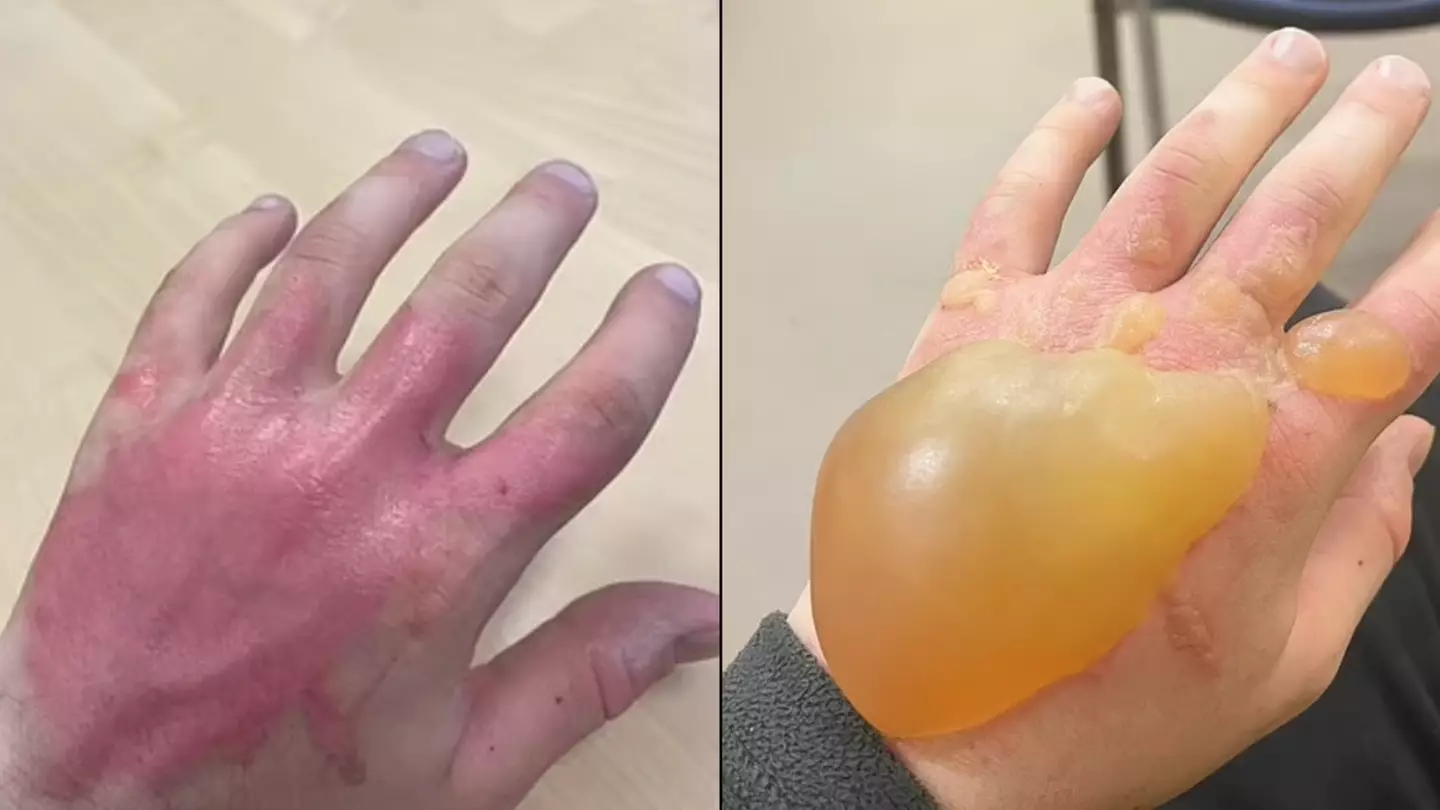
A teenager ended up with a massive blister on his hand after coming into contact with 'Britain's most dangerous plant'.
The Brit thinks that he came across the harmful plant while riding his bike near his home in Dunbar, East Lothian, Scotland.
Worryingly, after just a few hours, Ross McPherson saw his hand turning red, soon erupting into painful blisters that needed urgent medical treatment.
According to Ross, he 'must've just brushed past it' while riding his bike, saying the contact would just have been 'seconds'.
Advert
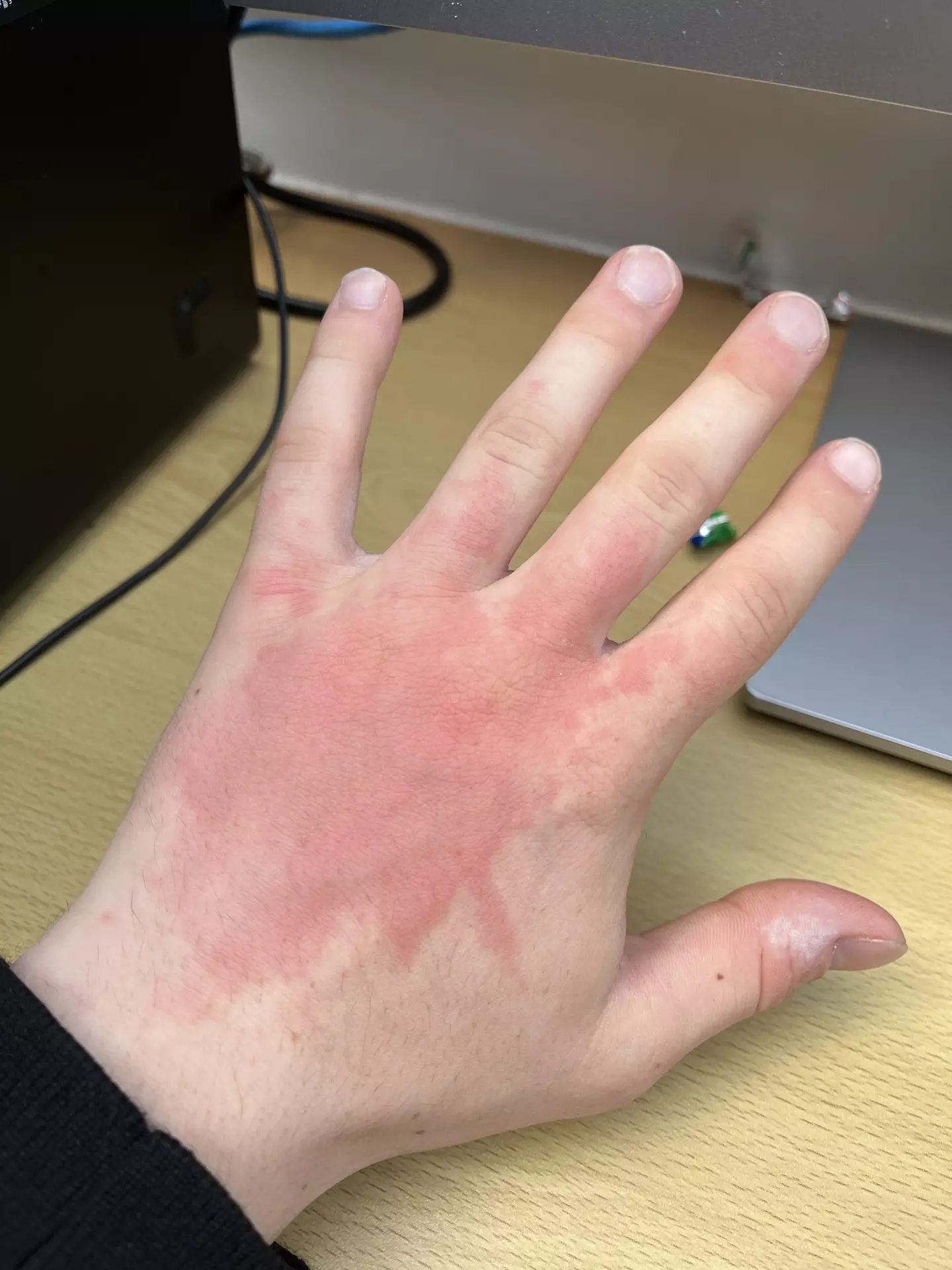
'It felt like having a giant balloon on my hand that was susceptible to pain'
"When I first noticed it, my hand was just red and slightly painful. I didn't know what it was. It felt warm," he explained.
It didn't take long for the blisters to show up, and not only were they aesthetically horrible to see, they were excruciatingly painful for the Scot.
"The skin was swollen around my hand, it felt warm and it hurt," he revealed.
Advert
"It impacted daily life quite a lot: I couldn't put clothes over it and, because it was over my joints, I couldn't really use my left hand.
"It felt like having a giant balloon on my hand that was susceptible to pain at any point in the day," Ross said.
He struggled putting clothes on and taking them off, but more bad news followed as new blisters over his knuckles rendering him completely unable to use his left hand.
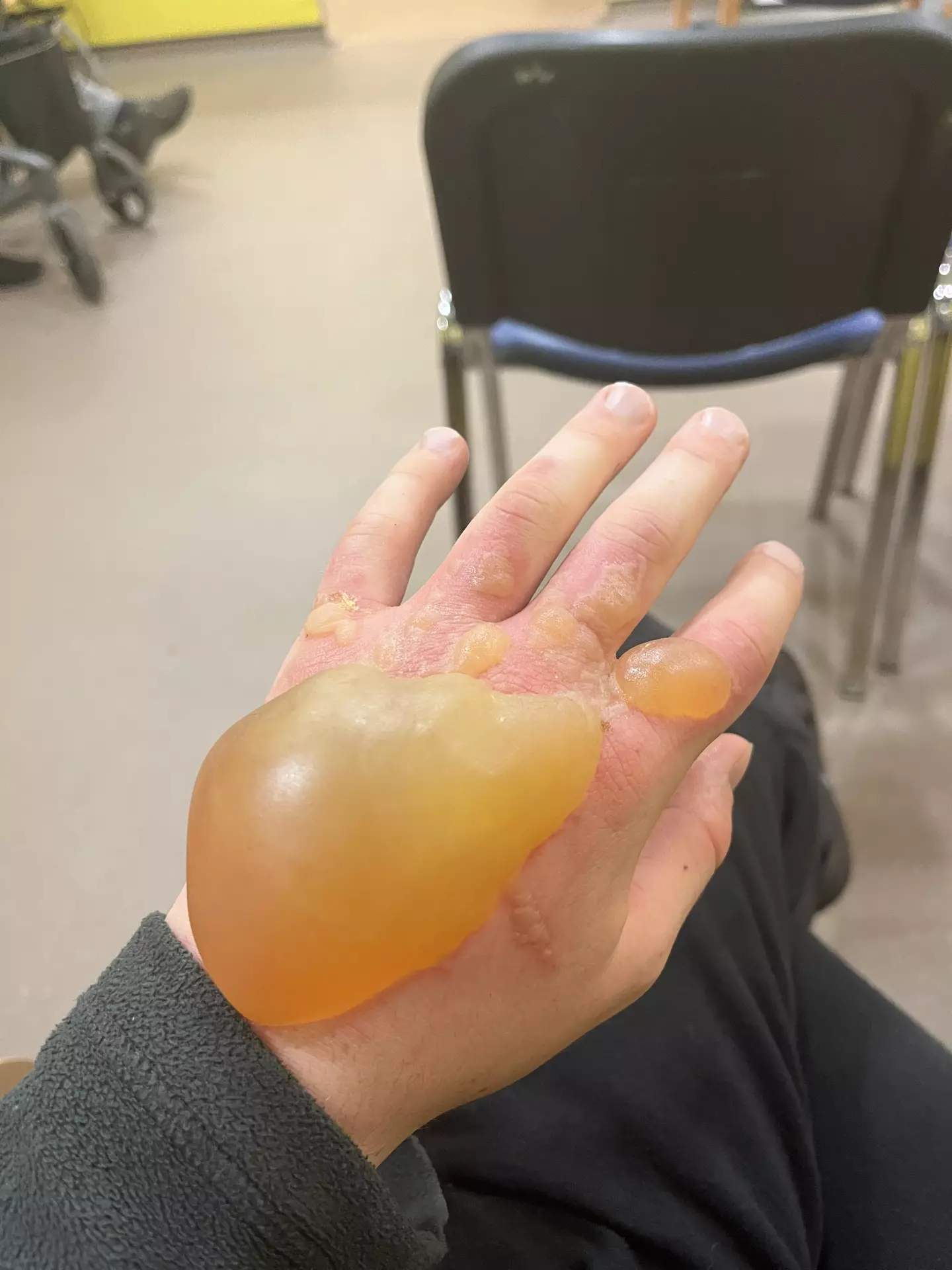
A painful hospital visit
However, when Ross went to his GP with the problem, he was diagnosed with contact dermatitis, shortly before being treated at Edinburgh's Royal Infirmary after visiting the A&E department.
Advert
Upon closer inspection, it looked like the teenager had a mixture of second and third-degree burns, saying that removing them was 'absolute hell'.
After originally being told to go to the burns unit in Livingston, the NHS professionals chose to keep it in the Royal Infirmary.
"She cut like a line in it and drained the fluid," he grimly described.
"Some of it was jelly so she opened it up and pulled the jelly out, and she cut around all the dead and blistered skin, and pulled it off – there was quite a lot of it,
"You're not on anaesthetic because they need to make sure the nerves aren't damaged and that you're feeling it – because in the more serious cases that can happen," he highlighted, adding that he also fainted during the ordeal.
Advert
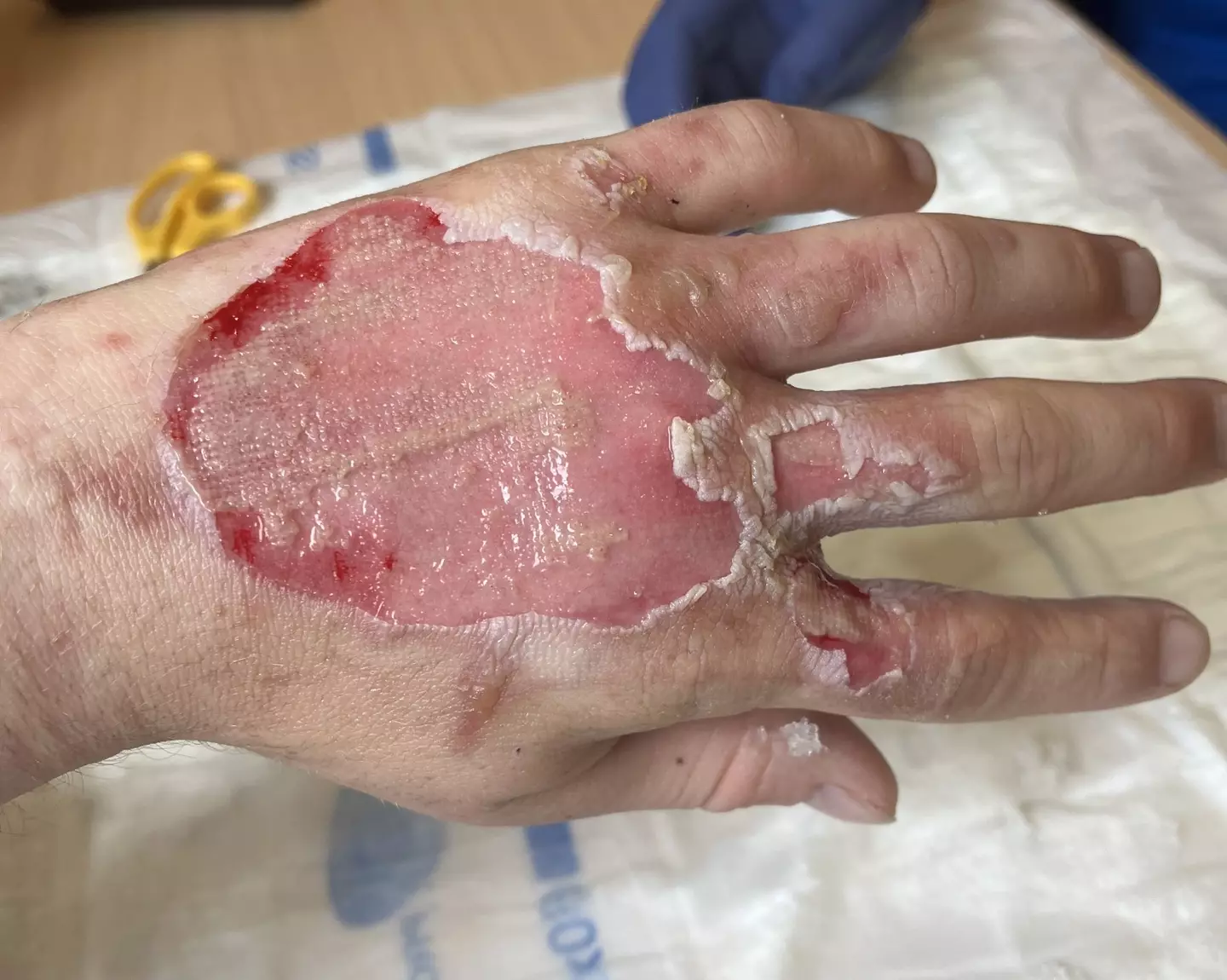
Ross scarily admitted: "The largest one was seven centimetres by eight centimetres. It was like an orange, It was heavy; I could feel the weight of it on my hand continuously."
The 'dangerous' plant that caused the horrific blisters
The plant in question was a giant hogweed, which contains sap that stops the skin from protecting itself against the sun's harmful Ultraviolet rays, which results in horrific burns.
The scariest part of all of it is though, is that it doesn't cause any immediate pain, so victims can burn in the sun while being completely oblivious to any issue - and all it takes is a bit of contact.
Advert
Luckily for Ross, his hand is beginning to heal, though he will have to live with some after-effects for the immediate future.
"It'll remain sensitive for years and years, but they can't give an exact number," he detailed.
"They said put factor 50 sunscreen on it for the next couple of years, or a glove in the winter if possible."
Where can giant hogweed be found?
Native to the Caucasus, the giant hogweed was introduced to the UK as a decorative plant in 1817, but its spread became uncontrollable.
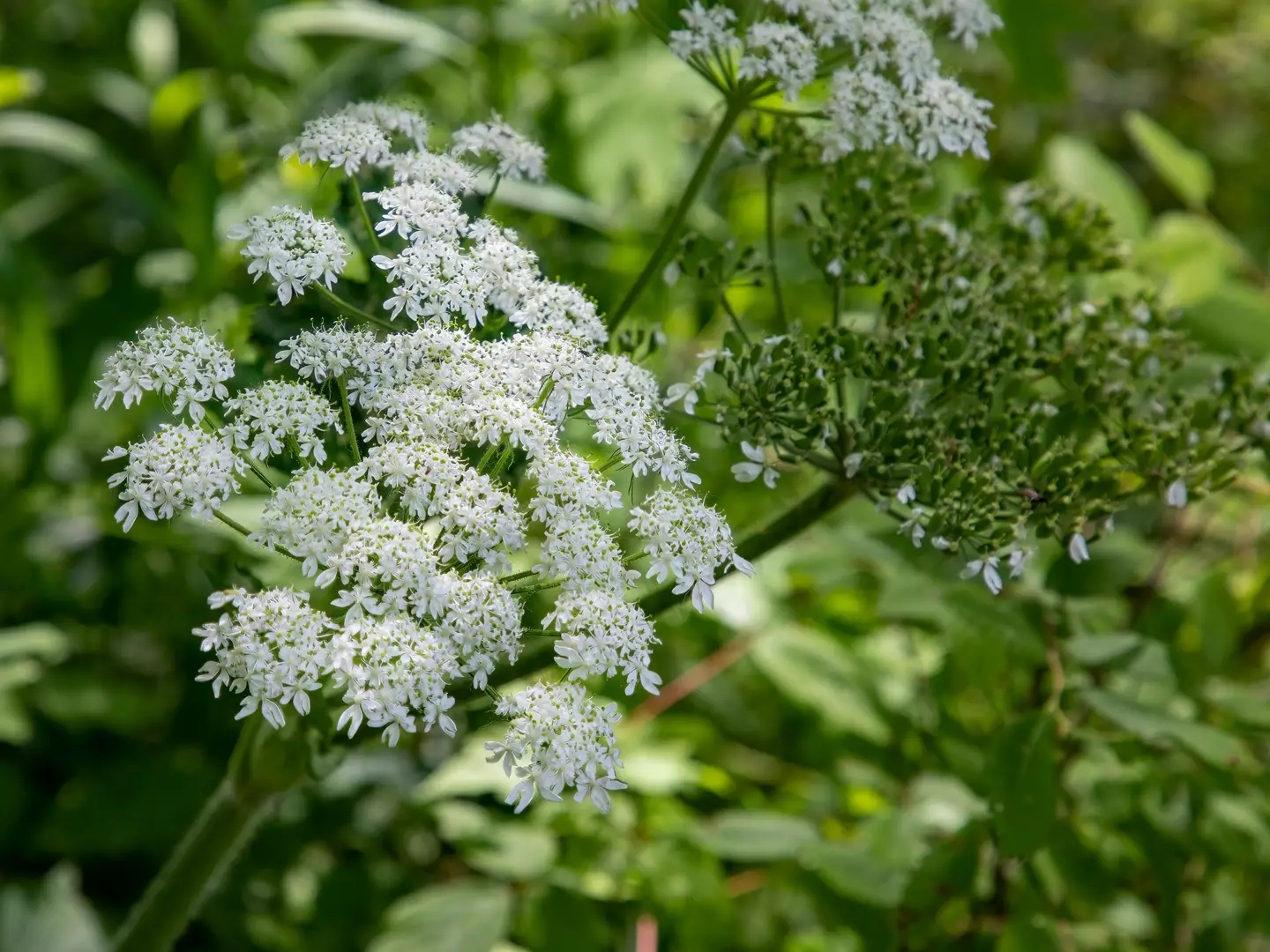
Mike Duddy of the Mersey Basin Rivers Trust, previously stated that it was 'without a shadow of a doubt, the most dangerous plant in Britain'.
It's important that if you come into contact with the plant, you should thoroughly wash the area and keep it out of the sun for a few days, according to the Woodland Trust.
Despite being certain that he encountered a hogweed, a spokesperson from the East Lothian Council revealed that they couldn't find what Ross claimed to come across.
“Suspected giant hogweed was reported to us in Dunbar and on investigation of the location provided it was concluded it was in fact common hogweed," they began to explain.
“Every report of giant hogweed is fully investigated and actioned if it is on council land.”
They concluded: “Members of the public are requested and encouraged to report giant hogweed to us via the website or calling the council contact centre so that these plants can be dealt with as they appear.”